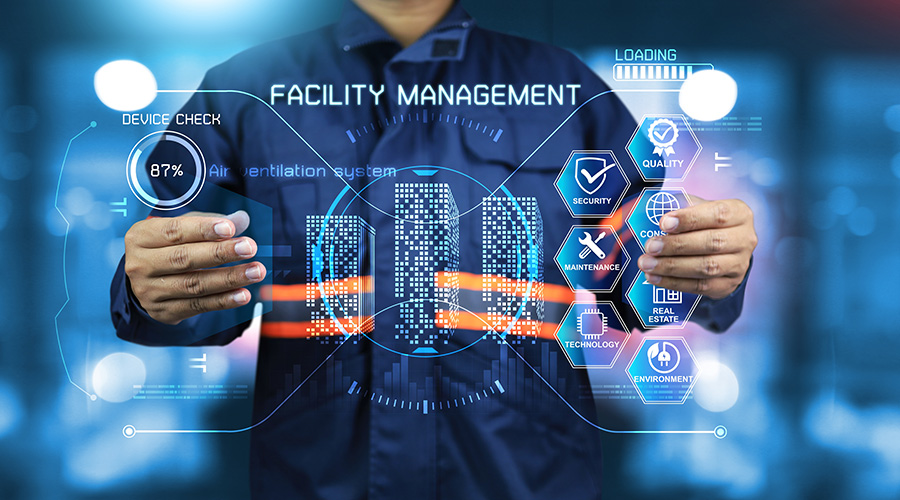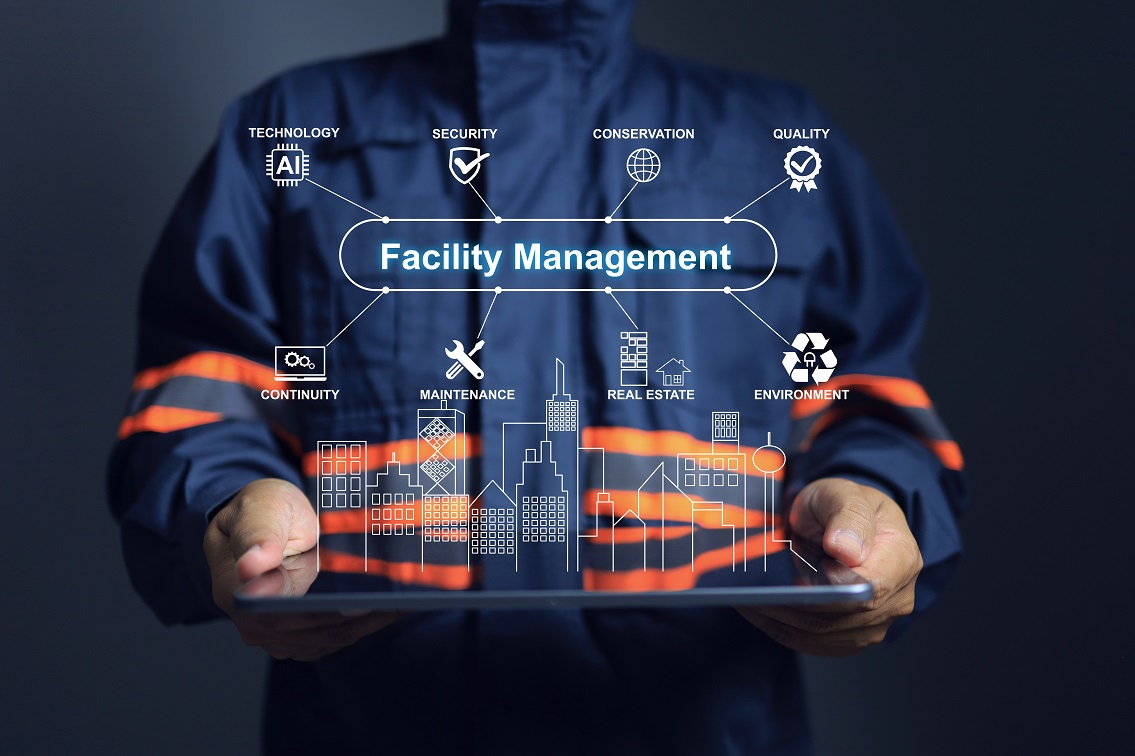The Important Guide to Facility Monitoring: Approaches for Success
Facility monitoring plays a crucial duty in the overall success of a company, offering as the backbone that sustains productivity, safety and security, and performance. The subtleties of efficient center management expand past plain logistics and require a thorough understanding of both qualitative and quantitative metrics.
Comprehending Facility Management
What comprises efficient facility monitoring? Effective center administration encompasses the control of numerous organizational features to ensure that developed atmospheres are risk-free, effective, and favorable to performance. It integrates the concepts of design, design, and service management to create a seamless functional circulation within an organization.
Crucial element of facility administration consist of space planning, upkeep monitoring, and conformity with health and safety policies. Area preparation concentrates on optimizing the use of physical resources to sustain business objectives, while upkeep monitoring ensures that facilities are kept in optimal condition, maximizing life expectancy and minimizing functional prices. Conformity with governing and lawful criteria is critical, as it safeguards the company versus potential liabilities and enhances its reputation.
Additionally, effective facility management depends on the critical use modern technology, such as Structure Monitoring Equipment (BMS) and Computer-Aided Center Administration (CAFM) tools. These technologies facilitate real-time monitoring of structure systems and enhance maintenance procedures (Facility Management). Eventually, a comprehensive approach to facility management not only advertises operational performance yet also fosters a favorable atmosphere for workers and visitors alike, driving overall business success

Secret Strategies for Optimization
Enhancing center management needs a critical method that lines up functional experiment organizational objectives. To accomplish this, the initial essential method is the implementation of integrated technological options. Making use of sophisticated software application systems permits real-time monitoring of facility procedures, promoting data-driven decision-making and improving overall effectiveness.
Second of all, routine analyses of center efficiency are important. Performing routine assessments and audits makes it possible for facility supervisors to identify areas that need enhancement, making certain that sources are allocated effectively. This proactive method helps in reducing downtime and improving service shipment.
One more important approach is cultivating cooperation throughout divisions. By motivating open communication between teams, facility supervisors can much better straighten their techniques with company goals, resulting in improved functional harmony. Furthermore, engaging staff in training programs advertises a society of responsibility and improves their capability to contribute to optimization efforts.
Enhancing Safety And Security Methods
Enhancing security protocols is essential for developing a safe atmosphere within facilities. A comprehensive safety method not only protects staff members and visitors however additionally improves operational performance. Facility Management. To attain this, center managers have to carry out regular threat evaluations to make sure and recognize prospective hazards that proper steps remain in place

Additionally, clear communication channels must be established to report safety concerns promptly. This includes creating an available platform for workers to voice potential hazards or incidents without fear of retribution. Leveraging innovation can enhance safety actions; for instance, carrying out monitoring systems and access controls helps check facility activities and limit unauthorized entry.
Last but not least, compliance with local laws and market requirements is non-negotiable. Regular audits and testimonials of security protocols make certain positioning with current regulations and finest practices. By focusing on these techniques, center managers can grow a culture of safety and security that shields all stakeholders and eventually contributes to the company's success.
Improving Office Atmosphere
A positive office environment dramatically improves staff member morale and performance, making it an important focus for center management. To see develop such an atmosphere, center managers must prioritize a number of crucial elements, consisting of ergonomics, aesthetics, and worker involvement.
Ergonomic considerations are essential to lessen physical strain and discomfort. This includes giving adjustable furniture, correct lights, and sufficient area for activity. These adjustments can result in minimized absence and enhanced task satisfaction.
Aesthetic appeals play an essential role in shaping the work environment environment. Making use of shade psychology, all-natural lighting, and greenery can cultivate a welcoming and stimulating atmosphere. Attentively created rooms can enhance creative thinking and improve overall well-being.
Furthermore, urging staff member involvement via comprehensive decision-making procedures can boost the feeling of possession and belonging. Collecting responses on office renovations and entailing staff members in the style process can cause a much more tailored atmosphere that go now meets their needs.
Lastly, promoting health campaigns, such as health cares and relaxation spaces, can further add to a supportive workplace society. By concentrating on these methods, facility managers can properly boost the workplace environment, driving both staff member contentment and business success.
Measuring Success in Facilities
Determining success in facility management calls for a detailed method that evaluates both measurable and qualitative metrics. Measurable metrics commonly include key efficiency indicators (KPIs) such as room utilization prices, energy intake, maintenance prices, and tenancy levels. These metrics supply a clear photo of functional effectiveness and economic performance, allowing center supervisors to determine locations for improvement and standard against sector standards.
Qualitative helpful hints metrics, on the various other hand, focus on individual satisfaction and worker engagement. Studies and responses devices can evaluate just how well the facilities fulfill the needs of passengers, aiding to evaluate the total workplace atmosphere. This facet is important, as a completely satisfied workforce is usually linked to raised productivity and retention rates.
To successfully measure success, facility supervisors need to also think about incorporating modern technology, such as building administration systems and data analytics devices, to accumulate and evaluate appropriate information. Routinely examining both collections of metrics permits a more balanced view of performance and notifies critical decisions. Eventually, an effective center monitoring strategy rests on a commitment to continuous enhancement, making sure that both functional effectiveness and customer contentment are focused on.

Conclusion
Finally, effective center administration is important for enhancing business performance. By implementing incorporated technological remedies, carrying out routine evaluations, and promoting cooperation across departments, companies can attain optimum resource allowance and functional efficiency. Focusing on security protocols and enhancing workplace atmospheres further add to increased staff member complete satisfaction. Ultimately, determining success via both qualitative and measurable metrics enables constant renovation, eventually bring about decreased functional prices and a much more effective organizational environment.
Center management plays a vital function in the total success of a company, offering as the foundation that sustains efficiency, productivity, and safety.Trick aspects of center administration include space preparation, upkeep monitoring, and conformity with health and wellness and safety regulations.Furthermore, reliable center administration depends on the tactical use of modern technology, such as Structure Administration Systems (BMS) and Computer-Aided Center Monitoring (CAFM) tools. Ultimately, a comprehensive strategy to center management not only advertises operational efficiency yet likewise fosters a favorable atmosphere for employees and site visitors alike, driving total organizational success.
Inevitably, an effective facility monitoring technique pivots on a dedication to continuous renovation, guaranteeing that both functional effectiveness and user contentment are prioritized.